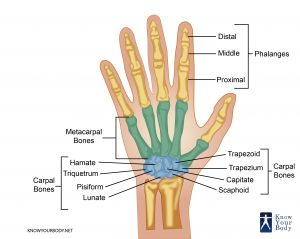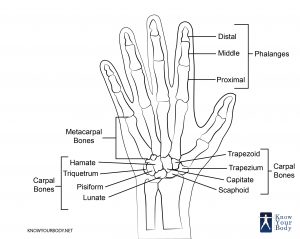Hand Bones Anatomy and Structure
We use our hands in performing so many minor as well as major activities. But we hardly wonder how this part of our body works. Like a human body, the human hand also consists of certain types of bones that provide strength and flexibility to it. There are three types of bones that comprise our hands. These include – Carpal bones, Metacarpal bones, and Phalanges.
Carpal Bones
These bones are the most proximal ones i.e. they are located quite close to the joints or point of
attachment in the wrist area. They are present as a set of eight irregular shaped bones in two
distinct rows – Proximal and Distal.
In the proximal row of the carpal bones, we have:
• Scaphoid
• Lunate
• Triquetrum
• Pisiform
In the distal row of carpal bones, we have:
• Trapezium
• Trapezoid
• Capitate
• Hamate
Besides all, Scaphoid is the most commonly fractured bone in the hand. This occurs due to FOOSH,
which stands for Falling on an Outstretched Hand. People who have a missed Scaphoid fracture are
likely to suffer from osteoarthritis in the wrist area in the later stages of life.
Metacarpal Bones
These hand bones are five in number with each one of them relating to some digit. They articulate
proximally with carpal bones in the hands while distally with the phalanges. The relation of these
bones with digits signify the bones of the five fingers:
• Metacarpal I – Thumb
• Metacarpal II – Index finger
• Metacarpal III –Middle finger
• Metacarpal IV – Ring finger
• Metacarpal V – Little finger
There are two common fractures associated with metacarpal bones – Boxer’s fracture and Bennett’s
fracture.
Phalanges
These hand bones are the most distal ones. These are the bones of the fingers. There are three
phalanges in four of the fingers – proximal, middle and distal while a thumb has only two phalanges
– proximal and distal.



No comments yet.